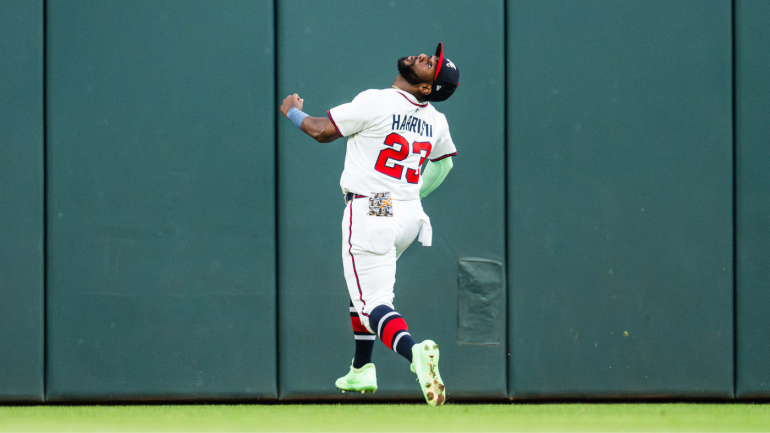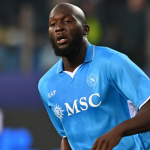

Grant Holmes couldn’t believe what he had witnessed. The Braves starter placed his hand and glove on the back of his blue Atlanta cap in awe of what he just saw from Michael Harris II in center field on a ball that found his mitt and defied logic. The often-stoic Matt Olson emphatically pointed in Harris’ direction, acknowledging the play that few could make.
It occurred in the bottom of the fourth inning of the Braves’ May 12 matchup against the Nationals. With Atlanta ahead 2-1, Holmes ripped off a 3-2 curveball that caught too much of the middle of the plate and Luis Garcìa Jr. launched it toward the 400-foot mark in center.
Harris got turned around a bit, opening up as if the ball was hit to right-center. Most center fielders would have burned by that slight blunder, but Harris is not most center fielders and is rarely fooled. Sometimes, a brief detour is just required. So, Harris, noticing the ball curved over his right shoulder, never opened back up to the field of action. Instead, he turned his right shoulder away from the ball while glancing back to gauge his distance from the wall. Then Harris, a lefty, found the wall, extended his arm straight out, and made the catch for the third out of the inning.
“There’s an intangible of being able to adjust. feeling the wall, knowing where you’re at, knowing when to jump, knowing when to leave your feet,” Olson said. “He’s just really good at that. He’s never out of control.”
The control aspect is a sight to behold. Harris isn’t necessarily a burner, but his jumps, reads, feel, and the pace he plays with rate him among the best in the game. He credits his football background with helping him be a ballhawk in the outfield.
“I think it just comes from working during batting practice and having the background of playing cornerback and wide receiver,” Harris said. “I know how to get to a spot and adjust my hips.”
Harris works out with former Braves outfielder Marquis Grissom during the offseason. They practice routes, reads, even sound.
“I think a lot of people underestimate the sound of the bat,” Harris said. “You have to hear it, see it, and, I guess, kind of anticipate where it’s going to be. So just hearing it off the bat and knowing the kind of a spot that is going to land, plus the angle and the trajectory.
If you’re not at Harris’ level, which few are, it’s a lot to digest. Harris is not only a natural, but a worker, always looking to make the right reads and even purposely making the wrong ones in BP so he can work on making the proper adjustment.
“I said the other day, ‘How do you do that?’ And he goes, ‘I practiced it every day,'” Braves manager Brian Snitker said. “All those weird catches he makes that just make me say ‘How the hell did you do that?'”
Though this is an ordinary occurrence, Harris’ plays always leave his teammates in awe. He’s a game-changer, even though he’s not hitting up to his capabilities at the plate. Harris is batting just .225/.259/.342 in 203 plate appearances, and the Braves are below .500 (24-25) as they welcome Ronald Acuña Jr. back to right field on Friday. But Harris’ ability to take away extra-base hits with ease is a major weapon for Atlanta.
In the Braves’ May 17 matchup against the Red Sox, Trevor Story drilled what looked like a sure double into the right-center field gap. The walls in that part of Fenway are low and notorious for catching outfielders off guard, often due to a blind spot that leads to unexpected collisions.
Harris, however, defines his routes, in part, by his spatial awareness. That requires, once again, taking your eye off the ball, something few can execute effectively. Harris made the proper read this time, running not with blazing speed but pace, assertiveness, assurance, and swagger that can only be mastered through preparation.
“There are balls that have been hit and I think it’s maybe a gapper,” Braves third baseman Austin Riley said. “And he just closes the distance so, so easily. It’s so quick. I think it’s just like his body awareness of just where his body is, where he is on the field. He’s just a special talent.”
The data, in some cases, backs the eye test and talent. Harris ranks in the 87th percentile so far this season in fielding run value per baseball savant and in the 94th percentile in range.
“He’s the best center fielder I have ever played with,” Olson said.
This news was originally published on this post .







Be the first to leave a comment